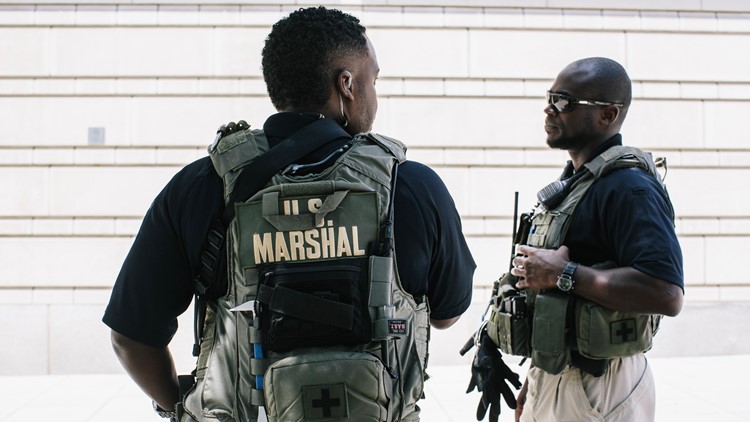WASHINGTON — Federal marshals have secretly used powerful cellphone surveillance tools to hunt nearly 6,000 suspects throughout the United States, according to newly-disclosed records in which the agency inadvertently identified itself as the nation’s most prolific known user of phone-tracking devices.
The fact that the U.S. Marshals Service uses cellphone trackers, commonly known as stingrays, has long been among law enforcement’s worst-kept secrets, though the agency still refuses to acknowledge it. The Marshals Service confirmed its use of the devices to USA TODAY only in the process of trying to keep it secret, rejecting a Freedom of Information Act request for a copy of its log of cases in which agents had used stingrays.
The Marshals Service’s response to that request included an almost totally censored spreadsheet listing its stingray cases, with information about the cases stripped out line by line, which made it possible to count the number of entries the agency had made on its log of stingray uses. The agency described the log in a letter as “a listing of IMSI catcher use,” using another name for the technology that intercepts cellphone signals.
Stingrays are suitcase-sized devices that can pinpoint a cellphone’s location within a few yards by posing as a cell tower. In the process, they also intercept information about other cellphones that happen to be nearby, a fact that has raised concerns among privacy advocates and some lawmakers. Dozens of police departments use the devices, often concealing that fact from suspects and their lawyers.
The Marshals Service’s surveillance log lists 5,975 cases in which the Marshals Service used stingrays. The agency declined to say what time period the log covered, or where the suspects were arrested. It also declined to identify the suspects, to protect their privacy.
“Just that sheer number is significant,” American Civil Liberties Union lawyer Nathan Wessler said. “That’s a lot of deployments of a very invasive surveillance tool."
No other law enforcement agency is known to have used stingrays so often. The New York Police Department told the ACLU last month that it used the cell-tracking devices about 1,000 times since 2008; the Florida Department of Law Enforcement said it had used one about 1,800 times to conduct investigations throughout the state. Until now, Baltimore’s police force had been the most prolific known user; a detective there testified that city police had used their tracker 4,300 times.
FBI director James Comey said in 2014 that stingrays allow the police to track dangerous criminals; “It’s how we find kidnappers. It’s how we find drug dealers. It’s how we find missing children. It’s how we find pedophiles,” he said. The Marshals Service declined to say what types of cases it used stingrays to investigate, but much of its work involves chasing fugitives and sex offenders.
Despite the nearly 6,000 times marshals used the device, there are few records to suggest that the government has revealed that fact to the suspects they arrested — though laws in some states require that suspects be notified of electronic surveillance.
Not disclosing use of stingrays appears to be the agency’s policy. The Marshals Service’s Technical Operations Group instructs agents that they should not reveal “sensitive or classified information or programs” without approval from the surveillance unit unless a court orders them to do so.
“For any sensitive technique, method, source or too, it only makes good sense that law enforcement would not divulge this information,” said William Sorukas, a former supervisor of the Marshals Service's domestic investigations arm. “An investigator would never release or publicize the name of a confidential informant.”
Still, privacy advocates have expressed alarm about the lengths to which law enforcement has gone to keep the cellphone trackers secret, even from courts. In 2014, the ACLU obtained an email from a Sarasota, Fla. Police sergeant asking officers from another agency not to reveal in court that their case had involved the use of a stingray. “In the past, and at the request of the U.S. Marshals, the investigative means utilized to locate the suspect have not been revealed," he wrote, suggesting that officers instead say they had received help from "a confidential source."
A spokesman for the Marshals Service, Drew Wade, declined to answer questions about agents’ use of stingrays. Instead, he said in a statement that the marshals “use various investigative techniques” to locate fugitives, and that whatever those techniques might be, they are “subject to court approval."
The Justice Department instructed federal agents last year to obtain a search warrant before using a stingray; in the past, agents were required only to seek a “pen register” order, which requires less judicial scrutiny. The department’s policy contains an exception for when agents use a stingray to prevent “escape by a suspect.” Wade declined to say how often the Marshals Service had relied on that exception, if ever.



